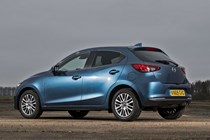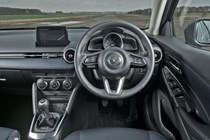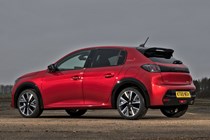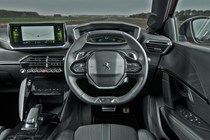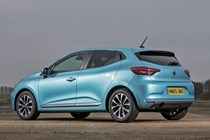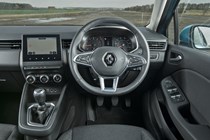The Renault Clio drove off with our gong for the Best First Car in the 2020 Parkers New Car Awards, praised for its excellent value and its youthful appeal, especially in higher-grade RS Line trim.
Now, though, it’s not the new kid on the block. Peugeot’s latest 208 has hit the road, and it’s set to shake things up with eye-catching looks and an even more arresting interior. The Clio’s still very much a looker, but lined up side by side, it’s the Peugeot that gets all the attention.
There’s also the Mazda 2. Believe it or not, it’s been updated for 2020 with subtly tweaked styling and some mild-hybrid engine technology under the bonnet to help boost efficiency. It’s unavoidably much older than the other two, but can it still compete?
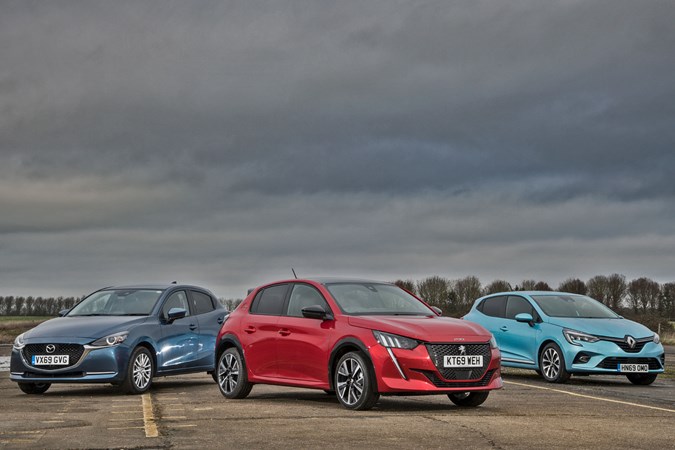
We’ve lined up mid-spec models of each for comparison (although the Peugeot pictured is a higher-spec GT Line model):
- Renault Clio Iconic TCe 100
- Peugeot 208 Allure PureTech 100
- Mazda 2 Sport Nav 1.5 90
Renault Clio
The top-spec version of the Clio (RS Line TCe 130 EDC) really caught our attention when we tested it last year. An interior that felt leaps and bounds ahead other superminis on sale really boosted its appeal, especially as the exterior hasn’t really changed that much since the last car. Does that still apply for lower-spec models, though? That’s why we’ve got a more modest Iconic spec for this test.
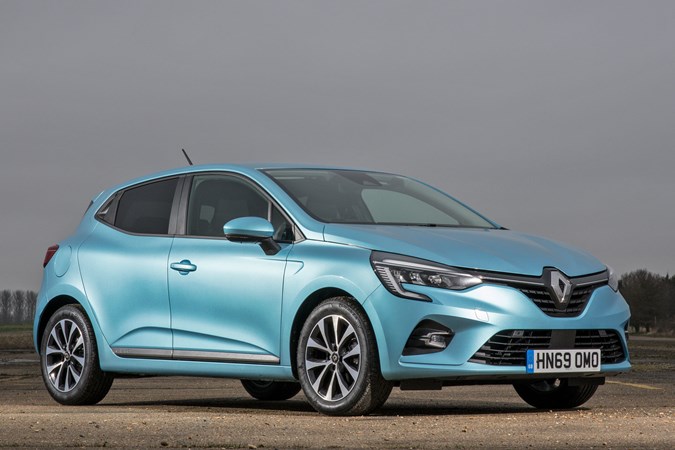
On first inspection, it’s a bit of a comedown from the top-spec RS Line model. While that’s not always surprising, there are several bits about that range-topper that made it appeal to us, and most of them are missing from lowlier Clios. First up, that big portrait screen has been lopped off in favour of a smaller unit operating an older system that’s not as user-friendly and far less crisp to use. Good thing it has Apple CarPlay and Android Auto is what we’d say. You also do without ambient lighting, fancy digital dials and a touch of colour.
Material quality is still pretty good, but it’s just all black and grey inside which is a little uninspiring. Same goes for many of its rivals, though, but it’s just a bit disappointing when you know there’s a much more colourful and glitzy model further up the range. The good news is the driving position is still just as good and the seats on this model are still very comfortable and supportive.
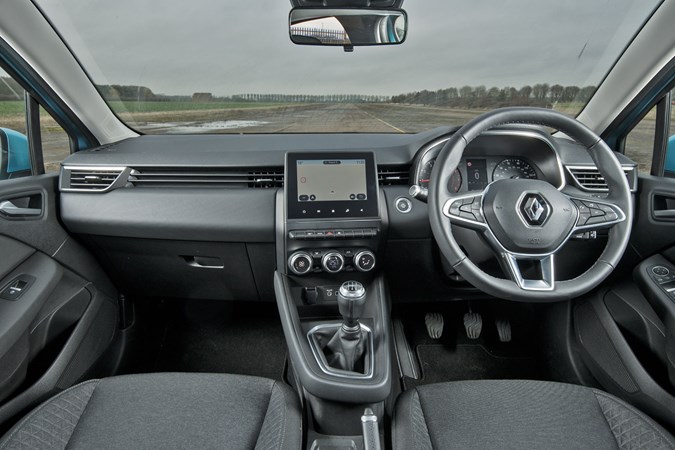
Perhaps the best bit about this Clio is that it proves you certainly don’t need the more powerful TCe 130 for good responses – the TCe 100 is more than up to the job on most occasions. It feels nippy around town and surprisingly strong out of it, our only niggles being that it comes with a five-speed manual gearbox (a sixth ratio would be nice to quieten things down on the motorway), and the fact refinement isn’t as good as you’ll find in VW Polo, or indeed the 208. The gearlever also has an annoying piece of trim around the top of it that doesn’t feel especially comfortable in your hand. It does claim up to 54.3mpg, which is the best in this test.
Finally, interior space is a mixed bag. The boot is easily the biggest here, but there’s a hefty loading lip to lug heavy things over, which impedes practicality quite a bit. Also, rear-seat space is disappointing – a Fiesta has more room, while the Polo and Ibiza feel almost a class above. In this test however, it’s about average. None of these cars have the most generous rear seats.
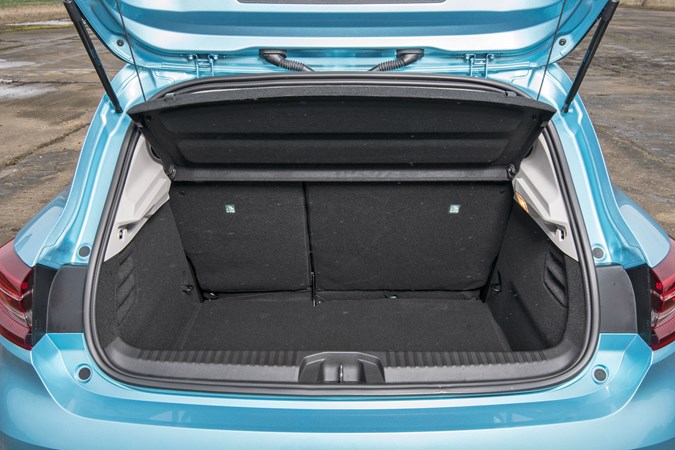
The Clio is a very good supermini. Interior quality is good and you get a lot of equipment for the money (more on how good value it is later), plus it’s easy and pleasant to drive. This spec would suit most buyers down to the ground, but the higher-spec models have a much nicer feel (also more on this further down the page…).
>> Read more on the Renault Clio in our full review
Peugeot 208
The 208 has arrived hot on the heels of this latest Clio, and Peugeot’s thrown a lot at it with eye-catching styling, an even more inviting interior and a broad spread of engine options, including an all-electric e-208.
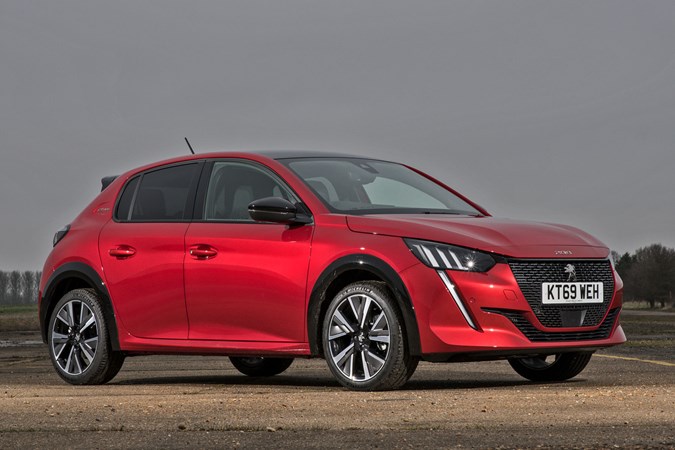
That’s not always enough – it can’t be the best supermini option just because it looks good on your driveway. The good news is the style is backed up with a good degree of substance. Interior quality is genuinely a match for a Volkswagen – perhaps even an Audi A1, there’s a generous amount of equipment available across the range (we’d go for an Allure or GT Line), and the engines provide good performance.
Of particular note is the PureTech 100 engine. With 100hp it may not sound much, but it provides surprisingly strong performance and feels eager to get going – and continue going – making us wonder whether you really need the more powerful 130hp version. Especially as you get a choice of manual and automatic transmissions. You don’t get that choice in the auto-only 130. It also claims between 46 and 53mpg, which shouldn’t be too hard to replicate in most driving situations. Even better is its refinement – it’s very quiet and barely intrudes into the cabin, making for a very peaceful ambience inside.
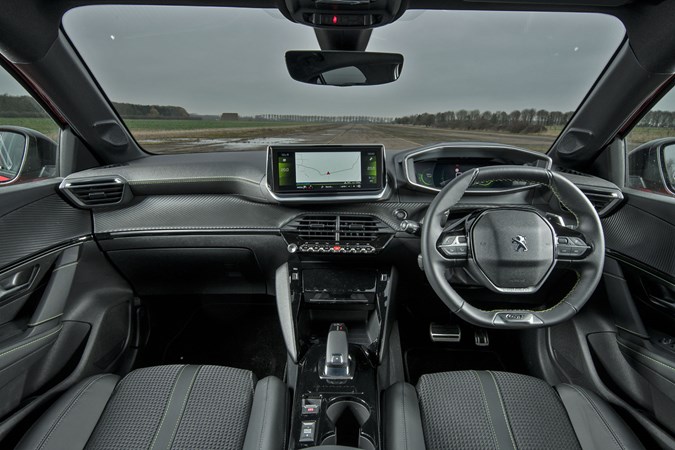
That calm is only disturbed if you drive over a series of bad bumps in the road – the Peugeot becoming more unsettled than the Clio. Bigger wheels on higher-spec models don’t help the situation, but that slightly firmer setup and quick steering makes it the sportier feeling of the two.
Inside, the dashboard is like nothing else available in the supermini sector. It looks very much like a concept car’s interior thanks to big, crisp screens (not available on all models), plenty of angles, impressive seats and a good dash of ambient lighting. The driving position will take a little getting use to for some because of the small steering wheel and high-set dials (which have a 3D effect that feels very futuristic), but the seats themselves are very good, and storage areas are plentiful.
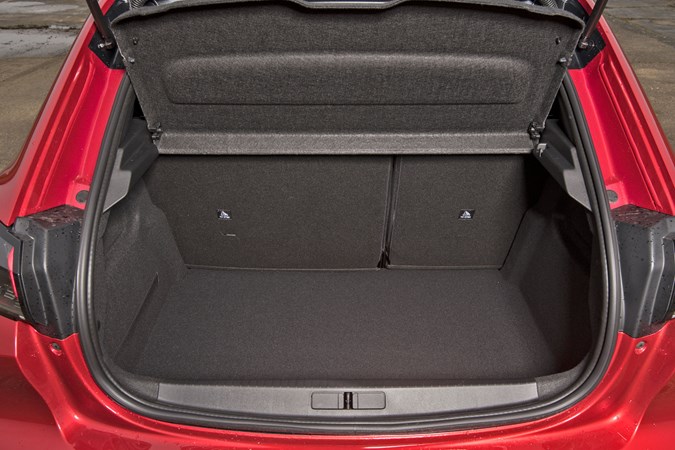
Rear space isn’t much to shout about – like it is in the Clio, but the boot is a useful shape and a decent 311 litres in size. Not the best out there and smaller in capacity than the Clio’s, but the lip to lug items over isn’t as high as the Renault’s.
>> Read more on the Peugeot 208 in our full review
Mazda 2
The Mazda features in this test because the Japanese company has given it a refresh for the 2020 model year. It’s not an all-new model, unlike both of the French cars in this test, giving it a slight disadvantage in that it still uses a lot of tech from the original 2014 car. That’s also why – despite some mild tweaks – it looks a little dated next to the other two.
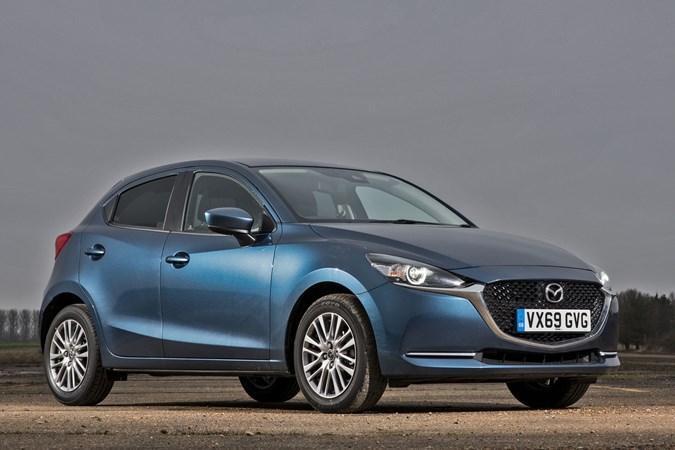
Looks aside, the Mazda 2 is still an interesting alternative. You get a lot of kit for your money, and a driving experience that will appeal to those who enjoy driving. You have to rev its 1.5-litre engine more than the Peugeot and Renault’s turbocharged units, and the manual gearbox is the slickest. It does feel quite slow, though, but there’s a good blend of comfort and sportiness, while the seats are supportive.
It’s also very good at hitting its claimed fuel economy figures, with 50mpg easily achievable (Mazda says it’ll do 53.3mpg) thanks to mild-hybrid technology that’s in place to boost efficiency as well as performance, although it’s hard to notice a boost in responsiveness compared with the older models without it.
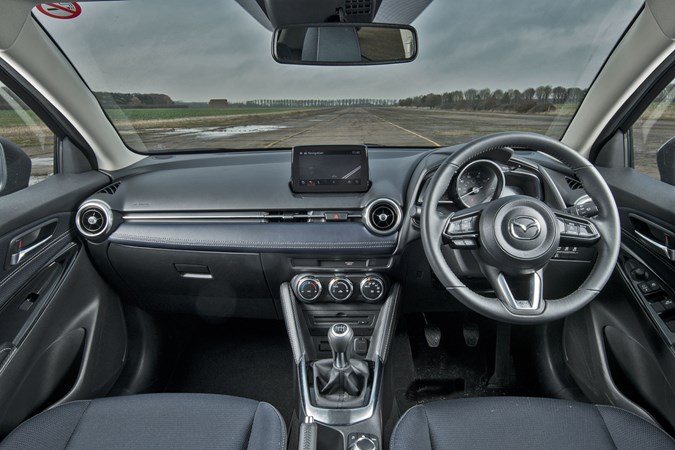
Sat behind the wheel, though, what was once an appealing interior now feels a little old by comparison. It still features some nice touches like a pad of material across the width, sporty-looking instruments and a rotary dial for the infotainment system. That’s immediately more user-friendly than a touchscreen-only setup, but the system itself looks old and the screen is quite small.
It’s easy to get comfy, and the taller body means rear headroom is the best in this test, although legroom is still fairly average – there’s more space in a VW Polo and SEAT Ibiza than any of the superminis in this test. The boot is also the smallest here, but you’ll still get several shopping bags or a few small, squashable holdalls in there.
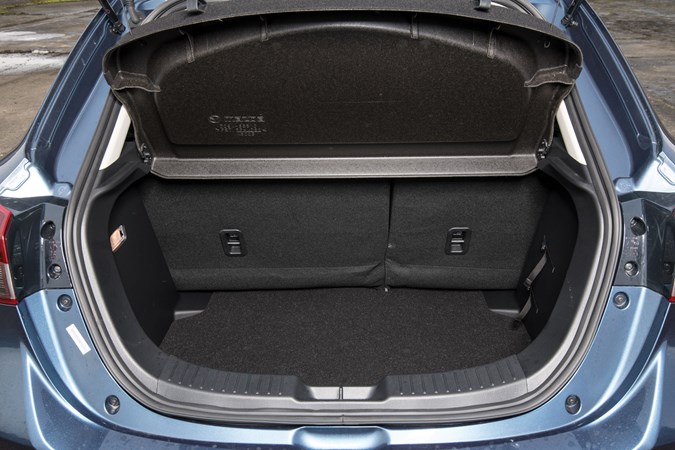
>> Read more on the Mazda 2 in our full review
Which is the best supermini?
Objectively, the Clio is the standout winner in this test. The value it represents is impressive as costs are pleasingly low, especially next to the pricey 208. But this specific trim level (Iconic) feels a bit of a letdown inside, where the 208 offers a far superior interior ambience in comparison even on lower-spec cars.
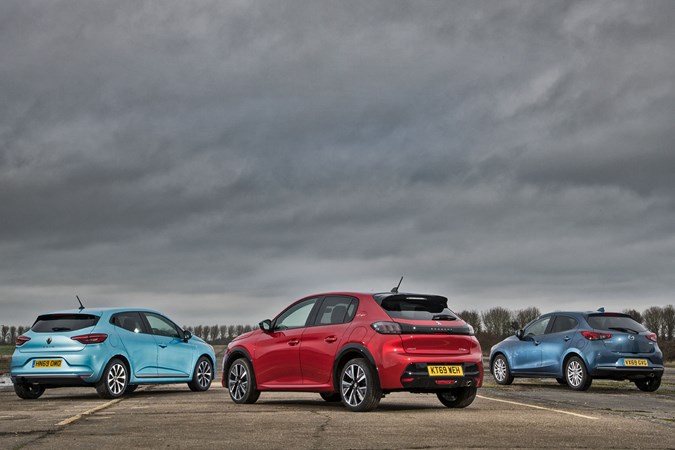
However, the Peugeot is notably more expensive than the Clio, and when we’re talking about this size of car, it’s hard to recommend the 208 when you can get a BMW 1 Series for a similar price on a PCP finance deal (yes, really). The way to solve the problem with the Clio is get a fancier version, and the good news is the RS Line models are also pleasingly affordable, allowing you to get into a bells and whistles version for much less than the equivalent 208. In fact, you can get it cheaper than a mid-spec 208, let alone a top-spec one.
We’d still recommend the Peugeot if you have the extra cash to spend. It looks the part, the interior is packed with modern kit that feels like it should be in much more expensive models, it’s comfortable and it’s very refined. But then so is something like an Audi A1, with very similar finance costs (there’s a table below showing a comparison of models and costs).
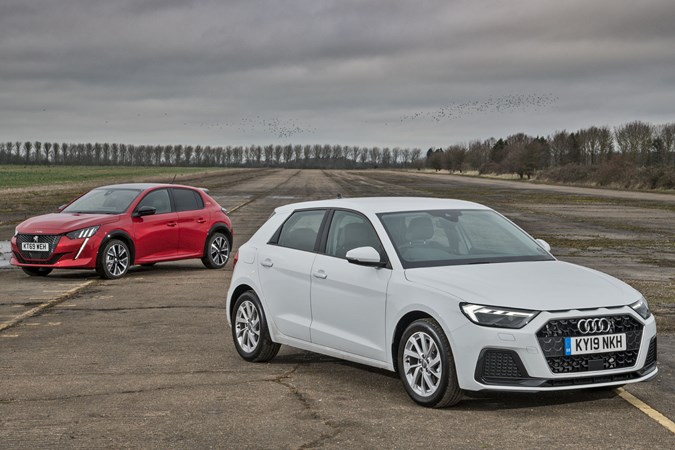
This leaves the Mazda further down the pack. It was included because it’s been revised for 2020, but those changes just aren’t enough to keep it competitive. Not only does it look dated, it’s also quite cramped inside and the infotainment system lags behind most rivals, despite being simple to use. However, it’s very easy to drive – in fact it’s quite fun if you like that sort of thing – plus it’ll realistically hit around 50mpg most of the time, so it’s a good option if you’ve got an eye on reliable running costs.
Cheapest supermini to lease*
The prices below are based on a £1,750 initial payment, 36 months and 8,000 miles per year. The Clio isn’t available on Zen Auto at the time of writing in Iconic trim, but higher-spec S Edition is, and is still cheaper than all the rivals here…
| Renault Clio S Edition TCe 100 | Peugeot 208 Allure PureTech 100 | Mazda 2 Sport Nav 1.5 | Audi A1 Sport 25 TFSI |
| £207 per month | £229 per month | £221 per month | £255 per month |
Cheapest supermini on PCP finance
If you want the option of owning your car at the end of the finance term instead of just handing it back, a PCP finance deal may be more appropriate option for you. The prices are sligthly higher, but the gaps between models are quite interesting. Each deal is based on a £2,000 customer deposit, 36 months and 8,000 miles per year.
| Renault Clio Iconic TCe 100 | Peugeot 208 Allure PureTech 100 | Mazda 2 Sport Nav 1.5 | Audi A1 Sport 25 TFSI |
| £229 per month | £268 per month | £236 per month | £276 per month |
So the Peugeot isn’t far behind an Audi A1 in terms of monthly payments, and while the 208 has more equipment, the prestige of an Audi badge and its equally inviting interior may sway some buyers. Also, if you look at spec-for-spec models, a 208 in attractive GT Line spec is quite a bit pricier than a top-spec Clio in equivalent RS Line trim. While the Peugeot is nice, getting a top-spec Clio with a huge kit list and upgraded infotainment system with larger screen is enough for us to continue recommending it over the rest.
| Renault Clio RS Line TCe 100 | Peugeot 208 GT Line PureTech 100 |
| £236 per month | £301 per month |
Further reading:
>> Fancy an electric supermini? We choose the best
>> We’ve lived with an Audi A1 for six months. See how we got on
>> Need something bigger? Here are our favourite hatchbacks
*These deals are indicative examples of some packages available as of 10 February 2020, but are subject to change without prior notice. Everyone’s financial circumstances are different and the availability of credit is subject to status. Terms, conditions and exclusions apply. Parkers cannot recommend a deal for you specifically.
Just so you know, we may receive a commission or other compensation from the links on this website - read why you should trust us.







